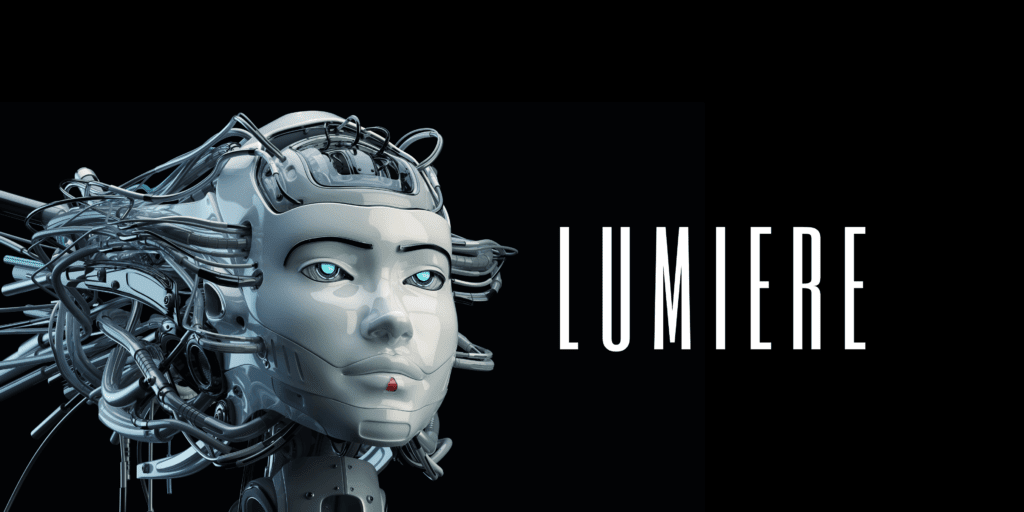In the rapidly evolving digital media landscape, Google’s latest breakthrough, Lumiere, emerges as a beacon of innovation, heralding a new era in content creation.
This pioneering text-to-video diffusion model transcends the boundaries of traditional video generation, offering an unprecedented ability to craft lifelike videos from simple text prompts.
Lumiere’s introduction marks a pivotal moment, blending the artistry of human imagination with the precision of artificial intelligence to produce videos that are visually compelling and remarkably coherent in motion and narrative.
As we explore the capabilities and implications of this cutting-edge technology, we stand at the cusp of a transformative shift in how visual stories are told, consumed, and shared. Lumiere is not just a tool; it’s a gateway to endless possibilities, challenging us to reimagine the future of video content in an AI-driven world.
Understanding Lumiere
Google’s groundbreaking text-to-video diffusion model, epitomizes cutting-edge artificial intelligence in transforming textual and image prompts into exceptionally realistic videos.
This model not only excels in creating seamless and coherent motion but also in its versatility, offering capabilities like transforming brief text descriptions into dynamic 5-second video clips at 16 frames per second, animating still images into captivating video sequences, and enabling users to apply specific artistic styles to their creations.
Beyond these, Lumiere provides sophisticated editing tools, such as cinemagraph creation and video inpainting, allowing for intricate modifications and enhancements of video scenes.
The technological backbone of Lumiere, the Space-Time U-Net architecture, processes video data simultaneously across spatial and temporal dimensions, ensuring a globally coherent motion.
This innovative approach significantly advances traditional text-to-video models, which often struggle to need help with fluidity and consistency.
Lumiere’s capabilities set a new standard for realism in auto-generated video content and unlock many creative and practical applications across diverse sectors, making it a beacon of innovation in digital storytelling and content creation.

Capabilities of Lumiere
Lumiere, Google’s advanced text-to-video diffusion model, showcases a remarkable array of capabilities pushing video generation technology’s boundaries.
At its core, Lumiere excels in converting textual prompts into vivid 5-second video clips, comprising 80 frames at a fluid 16 frames per second, effectively bridging the gap between written narrative and visual storytelling.
Beyond text-to-video, Lumiere adeptly transforms static images into engaging video sequences, allowing for a seamless transition from still photography to dynamic motion.
The model further extends its versatility through stylized video generation, where users can dictate their videos’ artistic direction using text and image prompts, creating content that resonates with specific aesthetic preferences.
Lumiere also boasts advanced video editing capabilities, including creating cinemagraphs—still photos in which a minor and repeated movement occurs—and video inpainting, which allows for repairing or modifying video segments.
This suite of features positions Lumiere not just as a tool for content creation but as a platform for innovation, offering endless possibilities for creators across various industries to explore new forms of visual expression and storytelling.
The Technology Behind Lumiere
The technology underpinning Google’s Lumiere is a testament to the advancements in artificial intelligence and video synthesis, setting this model apart in text-to-video generation.
At the heart of Lumiere’s unparalleled ability to create realistic and temporally coherent videos lies its innovative Space-Time U-Net architecture.
This sophisticated framework is designed to process video data across both spatial and temporal dimensions simultaneously, a stark contrast to the cascaded designs of traditional text-to-video models, which generate a set of keyframes first and then interpolate the in-between frames, often resulting in less fluid motion and temporal inconsistencies.
STUNet’s approach ensures that Lumiere maintains global coherence in motion throughout the video, eliminating the disjointed and glitchy movements that have plagued previous models.
This is achieved by learning to downsample and then upsample the video signal to preserve the continuity and flow of motion across all frames.
Lumiere incorporates advanced spatial super-resolution (SSR) techniques that work on overlapping windows of frames, enhancing the clarity and detail of the video without compromising its natural dynamics.
Lumiere’s integration of MultiDiffusion techniques, which blends the predictions from different stages of the video generation process, ensures that the final output is visually stunning and maintains a high level of consistency and realism.
This comprehensive approach to video synthesis, combining STUNet with SSR and MultiDiffusion, represents a significant leap forward in the field, enabling Lumiere to produce videos that are technically impressive and rich in narrative and aesthetic quality.
User Reception and Potential Applications
The unveiling of Lumiere has been met with widespread acclaim, reflecting a buoyant reception from users and industry insiders who see its vast potential to redefine content creation across numerous domains.
With its ability to craft high-fidelity, realistic videos from simple text or image prompts, this advanced text-to-video model has particularly resonated within entertainment, advertising, education, social media, and gaming.
Lumiere is poised to revolutionize how filmmakers and digital artists conceive and produce short films, animations, and visual narratives in the entertainment and media sectors, providing them with unprecedented creative freedom and technical capabilities.
Marketers and advertisers, too, recognize Lumiere’s transformative potential to generate captivating, narrative-driven content that can significantly enhance consumer engagement and brand appeal.
The educational field benefits from Lumiere’s capacity to create immersive, visually rich content that can make learning more engaging and compelling, from complex scientific visualizations to historical reenactments.
Social media influencers and content creators are eager to explore Lumiere’s capabilities to produce unique, trendsetting video content that could redefine viewer engagement on digital platforms.
The gaming industry could see a new era of game design and storytelling, with Lumiere enabling the creation of lifelike animations, dynamic backgrounds, and intricate cutscenes.
The enthusiastic reception of Lumiere underscores a burgeoning demand for innovative AI-driven tools in creative industries, heralding a future where video content is not only more accessible and personalized but also infinitely more dynamic and engaging.
Ethical Considerations and Future Directions
The advent of Google’s Lumiere, with its pioneering text-to-video generation capabilities, brings to light critical ethical considerations and prompts a dialogue on the future trajectory of AI in content creation.
The model’s proficiency in crafting highly realistic videos from simple prompts introduces potential risks, including creating deceptive content or deepfakes, raising concerns about misinformation and the erosion of trust in digital media.
As such, the imperative for robust safeguards against misuse becomes evident, necessitating the implementation of mechanisms like digital watermarking to verify the authenticity of AI-generated content and mitigate the associated risks.
The issue of inherent biases within AI systems, a byproduct of their training data, calls for a concerted effort to ensure fairness and prevent the perpetuation of stereotypes.
Looking ahead, the path forward involves a balanced approach that includes transparency in AI-generated content, the establishment of ethical guidelines, and possibly regulatory oversight to govern the use of such advanced technologies.
Technological safeguards capable of detecting AI-manipulated content will be crucial in maintaining the integrity of digital media.
Despite these challenges, the continued innovation and enhancement of models like Lumiere hold immense potential to revolutionize creative industries, education, and entertainment, provided these advancements are pursued with a conscientious regard for ethical implications and societal welfare.

Final Thoughts
The unveiling of Google’s Lumiere represents a watershed moment in artificial intelligence and digital media, illustrating both the immense potential and the ethical quandaries inherent in advanced AI technologies.
As Lumiere redefines the boundaries of video generation with its unparalleled ability to transform text and images into lifelike videos, it ushers in a new era of creative possibilities, offering tools to enrich storytelling, enhance educational content, and revolutionize advertising and entertainment.
The excitement surrounding Lumiere’s capabilities is tempered by the ethical considerations it raises. The potential for misuse, the challenges of ensuring content authenticity, and the need to address biases underscore the importance of navigating these advancements carefully and responsibly.
Developing and applying technologies like Lumiere demands a concerted effort from creators, technologists, ethicists, and policymakers to establish guidelines and safeguards that promote ethical use while fostering innovation.
As we stand on the cusp of this new frontier in AI-driven content creation, Lumiere highlights the incredible potential of artificial intelligence to augment human creativity and serves as a poignant reminder of the complex interplay between technological innovation and ethical responsibility.
The future of AI in creative industries will undoubtedly be shaped by the ongoing dialogue between these forces, guiding the responsible development and use of technologies that can inspire and challenge our perceptions of reality.


